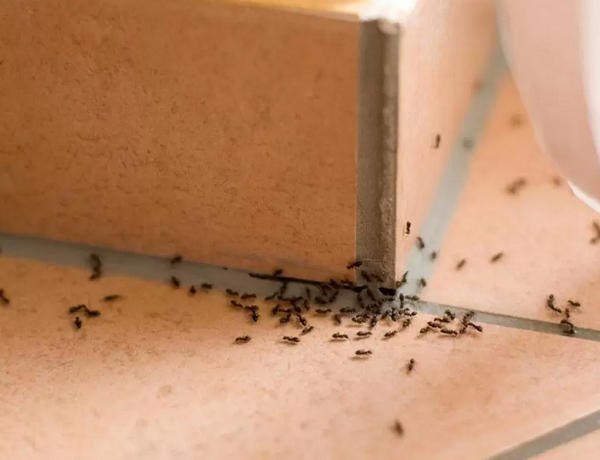What factors attract insects to your home
And insects make us who we are: they pollinate plants and rot organic matter. But as soon as they come into our homes, the little creatures are transformed quickly from a boon to a menace. Knowing the reasons that insects want to colonize your home can prevent pest infestations and keep your home clean and free from hazards. I’ll go over some of the top reasons why insects come into a home in this essay, my own personal stories, and expert advice on how to get your house bug-free.

1. Food Sources: An Open Invitation
It’s food that insects come into our homes for the most part. The floor is caked with crumbs, food is still in plastic cups and garbage bags are a buffet for ants, cockroaches and flies. Pupils will be attracted by tiny specks of spilled juice or meal.
Personal Experience:
I remember having an ant infestation in my kitchen with a sliver of crumb under the fridge. How a bug of such little size could draw in so many was an eye-opener. Clean it thoroughly and freeze food in airtight bags and the ants vanished within a day.
Expert Tip:
Keep the counters, floors, and sinks always clean.
Pack food in airtight containers and sanitize surfaces with vinegar to get rid of food debris and pest-attracting smells.
Place garbage away every day, seal trash cans.
2. Standing Water: A Breeding Ground
Mosquitoes, gnats and flies all like standing water. Whether a clogged drain, overwatered potted plant or pet bowl that’s gone missing, stagnant water is the perfect breeding ground for insects.
Expert Insight:
Mosquitoes, for instance, will make eggs in a bottle top or any remaining water. If you don’t have water standing in and around your house, you will eliminate their number considerably.
Expert Tip:
Look for leaks under sinks and appliances often.
Everyday empty and change pet water bowls.
Clear out gutters so water won’t sit on them.
: Disrupt larvae growth with mosquito dunks in ponds or fountains.
3. Warmth and Shelter
Insects are cold-blooded: they must take in heat from the outside world to keep themselves warm. Houses offer a warm, permanent home, which makes them very desirable during the winter months.
My Observation:
It’s a lot more spidery here in late fall and winter. They go in basements and attics, where it’s nice and warm. Spiders aren’t only useful for deterring other bugs, but they can be scary.
Expert Tip:
Fill holes, crevices and gaps around windows, doors and vents to stop bugs from getting inside your house.
Add weather stripping and caulk to the walls around pipes and electrical outlets.
Think of natural repellents such as essential oils (such as peppermint or eucalyptus) to ward off insects.
4. Clutter and Untidy Spaces
Messy rooms provide insect nooks. Remains of newspaper, cardboard boxes and unused underfloor space can be residences for cockroaches, silverfish and other insects.
Personal Challenge:
Restoring my storage closet – I could smell silverfish gnawing on the papers. Ever since, I have put papers and clothing in plastic bins instead of cardboard boxes.
Expert Tip:
De-clutter frequently to remove nesting grounds.
Vacuum all carpets, rugs and upholstery to get rid of dust, crumbs and bug larvae.
Change out storage items often so pests won’t be long-term residents.
5. Light Attracts Many Insects
Some insects, such as moths and beetles, like light. Bugs come in your house due to outdoor lighting and most often, they crawl in through open doors and windows.
Real-Life Scenario:
One evening one summer I left a porch light on near a window open. In the morning I found myself with hundreds of tiny beetles in my living room. That taught me how to separate lights and windows.
Expert Tip:
Make your “bug lights” yellow or amber so insects won’t be attracted to them when outside.
Opt out the window and door if you are using indoor lighting at night.
Put screen in windows and vents with fine mesh to stop bugs.
6. Plants and Gardens
Plants make your house beautiful, but also they will attract insects. Plants over-watered, leaves rotting and flowers become food and cover for insects.
Personal Experience:
When I once took a potted basil indoors, to insulate it from the frost, I found tiny aphids prowling about. And they bred themselves on my other houseplants, producing a little pest that took weeks to suppress.
Expert Tip:
Check plants thoroughly before bringing them in.
Don’t water too much because rotting plants like gnats and insects.
Remove dead leaves and pest control with neem oil.
7. Poor Maintenance and Structural Issues
Wall holes, screens and cracks near doors or windows are all places that insects could enter through. Soak basements and roof leaks make it worse, which is an ideal breeding ground for pests.
Realization:
I had neglected a small crack in my basement wall for months until a road was made by ants, marking it as a highway. The repair with the crack, with weather stripping, fixed the issue right up in a heartbeat.
Expert Tip:
Check the exterior of your house for gaps and cracks on a regular basis.
Replace cracked screens and old weather stripping.
Dehumidifiers: Reduce water in the basement and crawl space.
8. Uninvited Guests: Pets
The insects that your pet unwittingly introduces into your house. Fleas, ticks and mites ride on pets and cats, flying right into your home.
Lesson Learned:
My dog brought fleas in from a park a few years ago. I had to clean, vacuum, and bathe my pet for weeks before they were all gone.
Expert Tip:
Groom and check pets regularly for fleas and ticks.
Rinse pet bedding often and sweep spaces where your pets can go.
Flea and tick medications from veterinarians are the best.
